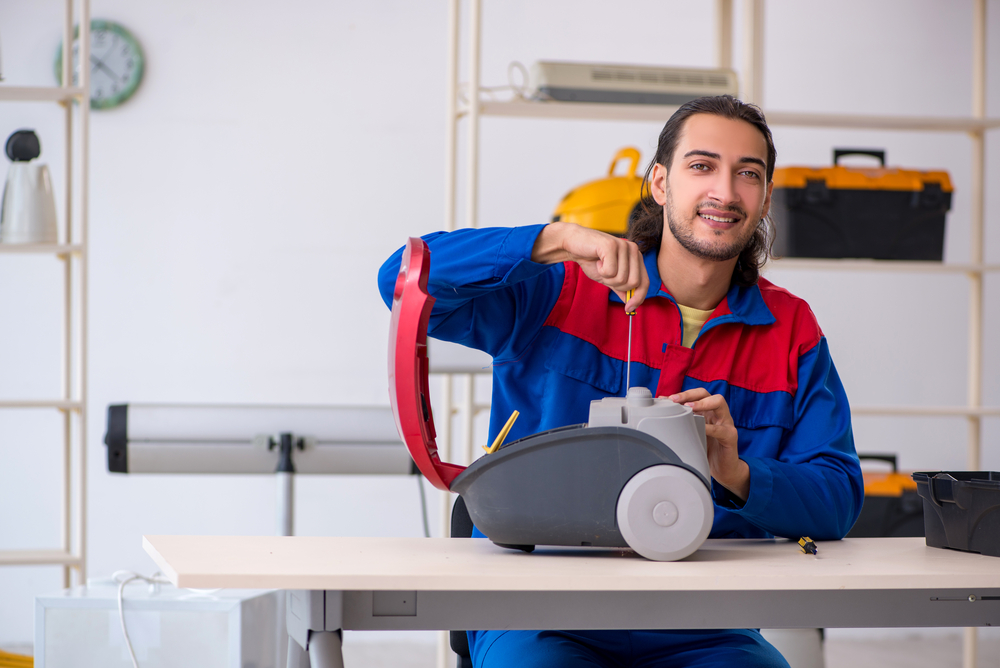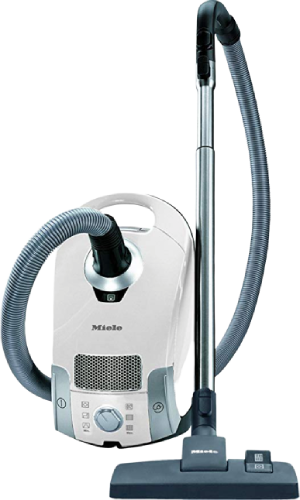
Solving Miele Vacuum Troubleshooting Problems in 2023 – A Comprehensive Guide
A Miele vacuum cleaner is a reliable and efficient cleaning tool, but like any household appliance, it can encounter occasional hiccups that need addressing. Fear not, dear reader, as we’ve gathered our vast knowledge and experience to create a comprehensive guide that will help you with Miele vacuum troubleshooting problems in 2023! By the end, you’ll be equipped with the confidence and know-how to tackle any problem that comes with Miele vacuum cleaners.
Identifying Common Miele Vacuum Issues
Before diving into specific solutions, it’s essential to understand the most common problems that Miele vacuum users face. Issues such as the vacuum not starting, a loss of suction power, or the vacuum overheating are everyday challenges you might encounter with your Miele cylinder vacuum cleaner. These problems can stem from clogged filters, dirt accumulation in the hose, or damaged components such as belts, brush rolls, or filters.Fear not; we’ll guide you through the troubleshooting steps to identify and fix these issues. However, keep in mind that if you encounter intricate issues with wiring, electricity, or control panels, it’s always best to have your vacuum serviced by professionals or Miele service specialists.
Limited Deal
Today’s Best Deal: Miele Classic C1
- Compact
- Ultra-Powerful Suction
- Corded Electric
Miele Vacuum Not Starting
Electrical issues can sometimes cause your Miele vacuum not to start. These issues can be located in three primary areas: the power cord, vacuum switches, or the cord reel. First, ensure the power cord is securely connected and the power switch activated.If your Miele vacuum still doesn’t turn on, you may need to inspect the cord reel or the vacuum switches. To assess the cord reel, set a multimeter to measure continuity, detach the cord from the reel, and test the two prongs that connect the cord to determine if there’s continuity.If replacing the cord reel doesn’t resolve the issue, you may need to replace the Miele motor or take the vacuum to a certified Miele repair center. Before doing so, ensure that all other components have been tested and are in good condition.
Loss of Suction Power
The cause of low suction in Miele vacuums is typically due to suction leaks caused by gaps in airflow. These gaps can result from unseated filters, improper cover closure, or tears in the hose or wand. To address suction issues, ensure you remove any blockages at the filter, bag, or hose.Aside from suction leaks, a blocked filter, an overfilled bag, and an obstruction in the hose can also make your Miele vacuum to lose its suction power. Regularly inspecting and cleaning these components will ensure the longevity and performance of your Miele vacuum cleaner.
Miele Vacuum Overheating
Miele vacuums are designed to shut off as a safety measure to prevent overheating caused by an airflow blockage. If your vacuum shuts off during use, verify that the filter and bag are both properly installed. If the issue persists, consider checking the power cord for any damages, as a defective power cord could cause the vacuum to cease operation unexpectedly.Remember that proper maintenance and regular checkups of your Miele vacuum will help you avoid overheating issues and prolong the life of your vacuum.
Fixing Miele Vacuum Brush Roll Issues
Brush roll issues are another common problem that Miele vacuum users encounter. A brush that isn’t rotating can lead to poor cleaning performance and stress on the vacuum motor. To troubleshoot a non-rotating brush, you’ll need to clean it of any dust and hair build-up, and inspect the belt responsible for rotating the brush.In the following subsections, we’ll guide you through the process of cleaning and maintaining the brush roll, as well as replacing the brush roll belt, restoring your Miele vacuum to its optimal cleaning capabilities.
Cleaning and Maintaining the Brush Roll
Regular cleaning of the brush roll is essential for maintaining your Miele vacuum’s performance. While no specific cleaning frequency is recommended, some users suggest cleaning the brush roll at least once a month, especially if tangled hair is a common occurrence. If the brush roll is blocked, gently rotate the brush in the opposite direction to untangle it. As you do this, be careful not to apply excessive force, as it could damage the belt. To clean the brush roll, unplug the vacuum cleaner, remove the bottom plate, and use a small brush or tweezers to remove debris from inside the roller head.
Replacing the Brush Roll Belt
The brush roll belt is located inside the housing of the Miele vacuum and is responsible for rotating the brush roll. If the belt is damaged, it can cause the brush roll to stop rotating, leading to poor cleaning performance.To replace the belt, unscrew the screws securing the top and bottom housings and carefully remove the old belt. Firmly hold the new belt in place while sliding it over the end of the roller brush to properly fit it over the end of the roller brush. Once the new belt is in place, insert it into the housing and securely fasten the top and bottom housings together.
Addressing Miele Vacuum Powerhead Problems
Powerhead issues, such as a clogged brush roll or filter, no power, and a lack of suction, can hamper your Miele vacuum’s performance. In these cases, replacing the parts and verifying their proper installation should resolve the issue.In the following subsections, we’ll explore troubleshooting powerhead issues and replacing powerhead components.
Troubleshooting Powerhead Issues
To troubleshoot powerhead issues, first inspect the belt, assess for any obstructions, and verify the suction setting. If the brush roll is clogged, remove the powerhead from the vacuum and clear any debris or hair from the brush roll.Next, check the filter for any blockages and clean it accordingly. If these steps do not resolve the powerhead issue, your vacuum cleaner may have a malfunctioning powerhead motor, an exhausted powerhead belt, or a broken cord. In such cases, it is recommended to take the machine to an authorized repair shop.
Replacing Powerhead Components
When replacing powerhead components, it’s essential to ensure the proper installation of each part. To remove the preexisting powerhead components, use a screwdriver to open the powerhead’s bottom face before replacing the end caps by removing the existing bearings and installing new ones. To replace the bearings, unscrew the screws securing them and insert the new bearings.Once all components have been replaced, test the new powerhead components by activating the vacuum and verifying that the powerhead is functioning correctly. Regular maintenance and replacement of powerhead components will ensure the longevity and performance of your Miele vacuum.
Handling Miele Vacuum Red Light Warnings
Red light warnings on Miele vacuums serve as indicators of various issues, such as a saturated filter or a thermal cutout switch in the motor. You should always address these warnings promptly, as they can signify potential damage to the vacuum.Below, we’ll guide you through understanding red light indicators and seeking professional help when necessary.
Understanding Red Light Indicators
The red light indicator on a Miele vacuum serves as a warning light to alert you to potential issues that need your attention. These issues can range from a saturated filter to a clogged hose. Replace the necessary filters to reset the red light indicator and press the reset button.If you are not sure what’s causing the light indicator, contact customer service and request for advice. They may be able to point you in the right direction and some even offer to replace the faulty parts. For more information on red light warnings and their meanings, consult your Miele vacuum’s user manual, which contains important safety, operation, and maintenance information.
Seeking Professional Help
If you’re unable to resolve red light warnings on your Miele vacuum, it’s crucial to seek professional help. Miele vacuum cleaners can be serviced by both factory-trained Miele technicians and independent service technicians. The average hourly cost for service is $65, with rates ranging from $40 to $95.For further assistance, you can contact Miele Service at 888-996-4353. Remember, seeking professional help when necessary protects your investment and ensures the longevity and performance of your Miele vacuum.
Maintaining Miele Vacuum Filters and Bags
Proper maintenance of your Miele vacuum filters and bags is essential for optimal cleaning performance and the longevity of your vacuum. It is recommended to service a Miele vacuum at least once annually, and these vacuums typically have a lifespan of approximately 10 years when maintained properly.In the following subsections, we’ll guide you through cleaning and replacing filters and changing the dust bag.
Cleaning and Replacing Filters
Miele vacuum filters should be cleaned regularly for optimal performance. To clean the filter, unplug the power cord from the outlet, remove the filter using an appropriate attachment, and rinse it in warm water. Gently scrub the filter with a soft brush and allow it to dry completely before reinstalling it into the vacuum.It’s advisable to replace the filter every three years or when indicated. By regularly cleaning and replacing filters, you’ll maintain the performance of your Miele vacuum and protect the motor from potential damage.
Changing Dust Bags
Regularly changing the dust bags on your Miele vacuum helps keep your cleaner working at its best for years to come. To change the vacuum bag, press the release button to open the dust compartment lid, gently pull the grip to remove the bag, and replace it with a new one. The bag should be exchanged every three months with average utilization.
Troubleshooting Miele Robot Vacuum Cleaners
Just like their traditional counterparts, Miele robot vacuum cleaners can encounter issues such as poor suction power and blockages. To address these issues, clean the vacuum cleaner’s floor head, brush bar, and filters, check for blockages, and empty the dust container.In the following subsections, we’ll guide you through understanding error codes and messages and addressing charging station issues.
Error Codes and Messages
Miele robot vacuum cleaners are equipped with a sticker that outlines all error messages, and the user manual provides details on fault messages and how to resolve them. Error codes such as F2 and F5 indicate dirty sensors or incorrectly mounted side brushes and overloaded brushes, respectively. When encountering error codes, consult the user manual for guidance on resolving the specific issue.
Charging Station Issues
Dirty charging contacts on both the robot vacuum and the charging dock are the most frequent charging station issues encountered with Miele robot vacuum cleaners. To clean the contacts, use a clean, lightly dampened melamine foam, such as a Magic Eraser, to gently scrub the contacts on both the robot and the charging dock.
Summary
In this comprehensive guide, we’ve covered the most common Miele vacuum issues, from loss of suction power to brush roll problems, and provided troubleshooting steps and maintenance tips to ensure the longevity and performance of your vacuum cleaner. Remember, regular maintenance and addressing issues promptly will protect your investment and keep your Miele vacuum running smoothly for years to come. With this knowledge in hand, you’re now equipped to tackle any vacuum problem that comes your way.

